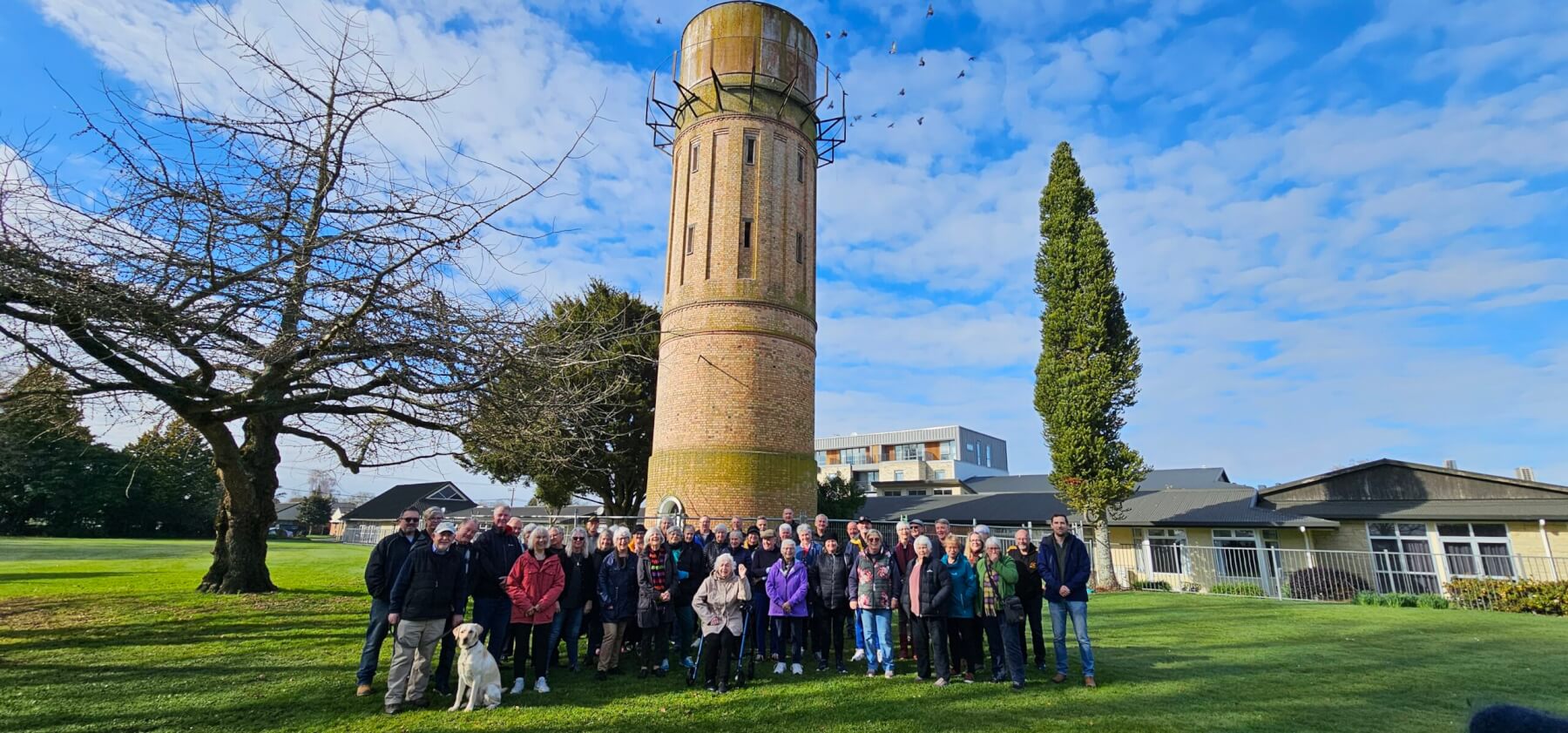
Save the Water Tower members
The Waipā council has inherited a “legacy of neglect” when it comes to the Cambridge Water Tower, says the man leading a community initiative to save the historic building.
Peter Fulton who chairs the Save the Cambridge Water Tower group met Waipā mayor Susan O’Regan this week and says he was heartened by her commitment to share information.

Members of the newly-formed Save the Cambridge Water Tower. Photo: Mary Anne Gill
“She was genuine about working collaboratively.”
The council sought public feedback on what to do with the tower. A majority of submissions favoured demolishing it – and that has sparked a campaign to keep it standing.
While Fulton has met with the council, he and the group have no intention of touching base with the Resthaven Community Trust over its redevelopment plans which could affect the water tower’s future.

Peter Fulton
“Resthaven is not critical to our cause,” said Fulton.
“That (future development) is between them and the council. We want to sharpen our focus on retaining the tower. That might change but that’s where we are at the moment.”
Fulton said he had no criticism of the current council which had to respond to a situation it inherited and a statutory requirement to do something about the tower which is now an earthquake risk.
The council will still apply for a resource consent to demolish the water tower which was found to be earthquake prone after new national guidelines came into effect after the Christchurch earthquakes.

The historic water tower in Payne Park, Cambridge. Photo: Mary Anne Gill.
Costs to strengthen the tower had increased because a more cost-effective solution the council had initially looked at several years ago was no longer available in New Zealand.
“They’ve had to go back to more conventional systems which involves strengthening the building and that’s where the $6 million comes into it.”

An aerial photo of the water tower. Photo: Brian Holden.
Another possibility the council had looked at was to buy part of Resthaven as a “fall zone” for the tower.
Fulton said he and members of his group had fielded suggestions from a number of people, but the one members wanted to pursue was one to look at what engineers did in Oamaru with the historic courthouse.

Susan O’Regan
Waitaki District Council took the lead on restoring the 1883 building for just under $1 million, funded through its endowment fund. Original estimates were around $5 million.
The building underwent significant strengthening with steel strengthening rods and plates installed throughout the building and a new roof. It reopened in 2018.
Fulton said the two options put to the Cambridge community – demolish the building for $800,000 or spend $6 million strengthening it – were too simplistic.
But adaptive reuse – a buzz term used by heritage architects – and strengthening were two different things, he said.
“My sense is if we were to find an inexpensive solution, the mayor would champion it. There was certainly a lot of goodwill there.”

Save the Cambridge Water Tower group founders, from left, Dave Linthwaite, Elizabeth Harvey, Peter Fulton, David Griffin, James Casey, Mike Kilgour. Photo: Mary Anne Gill.








